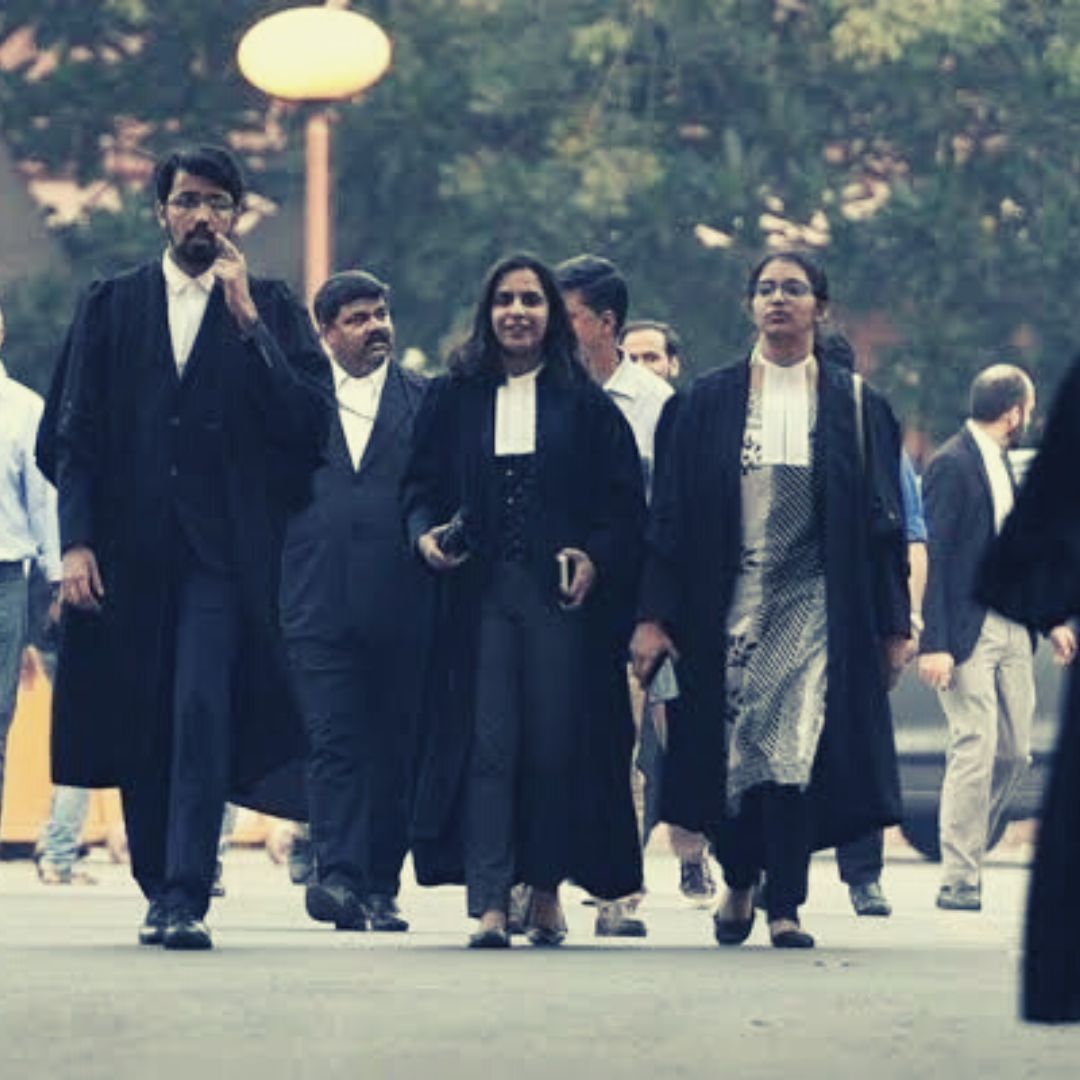
Image Credits: National Herald
Are British-Inspired Courtroom Gowns Suitable For Indian Climate? Debate Springs Up Again After Law Minister's Remark
Writer: Laxmi Mohan Kumar
She is an aspiring journalist in the process of learning and unlearning many things. Always up for discussions on everything from popular culture to politics.
India, 21 Oct 2022 3:54 AM GMT
Editor : Snehadri Sarkar |
While he is a massive sports fanatic, his interest also lies in mainstream news and nitpicking trending and less talked about everyday issues.
Creatives : Laxmi Mohan Kumar
She is an aspiring journalist in the process of learning and unlearning many things. Always up for discussions on everything from popular culture to politics.
A series of public interest litigations and petitions later, law minister's comment on discussing a courtroom dress suitable for India's weather conditions has brought about a relief for those who argued to do off with the mandatory black robes.
A court dress comprising of black gowns, white shirts/sarees, and neck bands are the first image that comes to mind when we think of lawyers and Indian courtrooms. This set of uniforms has been followed since the day of independence and has been the standard for every practising lawyer.
However, the uniform has not been devoid of objections all these years. Many have argued against it, claiming that it was handed down to Indians by the colonisers and that it needs to be revised to suit Indian conditions better. Petitions and public interest litigations were also filed along the same lines but were dismissed.
The uniform debate has now come about again after a comment by Union law minister Kiren Rijiju. He mentioned that he would soon be discussing a uniform well-suited to our weather conditions with the Chief Justice of India.
What Is The Debate Around The Courtroom Dress Code?
Advocate Shailendra Mani Tripathi had moved to the Supreme Court seeking changes in the uniform rules set by the Bar Council of India (BCI), the highest regulatory body of lawyers in the country. He advocated for an exemption for lawyers from wearing the black coat during the summer months.
Stating that it is difficult and uncomfortable to wear the mandatory coats while appearing at the supreme and high courts during the summer months, he suggested possible alternatives for the black coats. Talking to several media houses, he said that the uniform should be designed in a manner that makes their "work easy and not create impediments instead". This petition was dismissed by the apex court on July 25.
This issue was then taken up by many who said that they have faced similar concerns and arguing in the courts while drenched in sweat is not a comfortable experience. Explaining the problem further, Tripathi noted, "In courts situated in rural areas, there are no fans, no electricity and lawyers get drenched in sweat even if they wear only a shirt. Coats can't be worn in summers; uniforms should be in accordance with climatic conditions."
In response to the arguments saying that the uniform is "distinctive of their trade" and "signals equality before the law", Tripathi conveyed that he is not against the idea of a uniform but instead would want it to be revised in accordance with the weather conditions in India.
An article by the Firstpost shed light on yet another argument that was brought in by advocate Ashok Pandey in the form of public interest litigation (PIL) on July 2021.
He called the lawyer's dress code "unreasonable" and that its against their fundamental rights as the band was a "symbol of Christianity". Stating that non-Christians cannot be compelled to wear it, he asked the court to discuss the issue with the stakeholders.
By April, the Bar Council of India (BCI) constituted a five-member committee to discuss the issue of the dress code for lawyers. BCI Secretary noted that the "issue requires detailed deliberations with all stakeholders, including senior members of the Bar and the judiciary before the issue can be decided".
What Is The Current Uniform Code And Its History?
The standard uniform for male lawyers in India is a 'black buttoned up coat, chapkan, achkan, black sherwani and white bands with gown; or a black open breast coat, white collar, white bands with gowns, and long trousers'. As for women advocates, 'black and full or half-sleeved jacket or blouse, white collar with white bands with gown and sarees or long skirts or flare'.
India had adopted this dress code from the Britishers and tweaked off elements such as wigs for judges after their independence. The black robe or coat with the white neckband was made mandatory under the Advocates Act of 1961. Gowns are optional at times other than while appearing before the Supreme Court and High Courts.
However, Section 49 (1)(GG) of the Advocates Act permits the courtroom dress to "be in accordance with climatic conditions", and allows the BCI to make rules in regard to this.
Relaxations Made In Due Course
The Supreme Court had briefly relaxed the dress requirements and had done away with the black coats and gowns in 2020 during the pandemic outbreak. Way before the pandemic as well, such relaxations were observed during the summer months at the Delhi, Kerala, and Karnataka High Courts.
Many courts are of the opinion that it is time to introduce a more streamlined version of courtroom clothing. Speaking at an event in Gujarat, Law Minister Rijiju said, "Regarding the dress code in the courts, I won't make any comment. It would be better to think about a dress code which is suited to our weather conditions. I will be speaking to the CJI as to whether we would continue wearing 'English' dress or should we adopt a dress code which is according to our weather conditions".
With the debate prevailing on whether the dress code should be altered as per the weather conditions, the comment from Rijiju has stirred it up further.
Also Read: Lawyer Team Creates 'RTI Cell' To Make Legal Resources Easily Accessible To Public
 All section
All section














